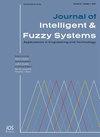改进椭圆曲线密码多重签名方案(RECC-MSS)以提高电子健康记录系统的安全性
IF 1
4区 计算机科学
Q3 COMPUTER SCIENCE, ARTIFICIAL INTELLIGENCE
引用次数: 0
摘要
物联网(IoT)是智能医疗领域的新兴技术。但是,病人的健康记录很难作为一个集中的网络进行转移。因此,“区块链技术”因其网络去中心化、开放性、数据不可逆、加密功能等独特的特性,具有很好的考虑价值。区块链技术依赖于加密哈希技术进行安全传输。为了提高安全性,它将可变大小的输入转换为恒定长度的哈希结果。当前带有数字签名的加密散列算法只能访问256字节大小的密钥,并且需要考虑单个节点的可访问性。它只是使用比特作为访问数据的钥匙。提出了一种基于多节点可用性的“修正椭圆曲线密码多重签名方案”(RECC-MSS),以寻找以医学图像为密钥进行安全通信的最近路径。在这里,可以将输入的图像键转换为一个数据数组,该数组的大小可以扩展到512字节。通过“单向方差分析”测试,对该算法的性能进行了“准确性”、“吞吐量”和“时间复杂度”的测试,并与安全哈希算法(sha)如“SHA224”、“SHA256”、“SHA384”、“SHA3-224”、“SHA3-256”、“SHA3-384”、“SHA3-512”和“消息摘要5”(MD5)等其他加密哈希函数进行了分析。采用ECC的方案在128字节哈希签名的情况下实现了17.07 kb / 200纳秒的吞吐量,准确率为93.25%,签名生成延迟为1.5纳秒,签名验证延迟为1.48纳秒,时间复杂度为1.5纳秒。RECC-MSS的精度显著性为0.001,时间复杂度显著性为0.002,均小于0.05。从统计分析来看,与其他加密哈希算法相比,该算法具有精度高、吞吐量大、时间复杂度低等优点。本文章由计算机程序翻译,如有差异,请以英文原文为准。
Revised elliptic curve cryptography multi-signature scheme (RECC-MSS) for enhancing security in electronic health record (EHR) system
Internet of things (IoT) is a recent developing technology in the field of smart healthcare. But it is difficult to transfer the patient’s health record as a centralized network. So, “blockchain technology” has excellent consideration due to its unique qualities such as decentralized network, openness, irreversible data, and cryptography functions. Blockchain technology depends on cryptography hash techniques for safe transmission. For increased security, it transforms the variable size inputs into a constant length hash result. Current cryptographic hash algorithms with digital signatures are only able to access keys up to a size of 256 bytes and have concerns with single node accessibility. It just uses the bits that serve as the key to access the data. This paper proposes the “Revised Elliptic Curve Cryptography Multi-Signature Scheme” (RECC-MSS) for multinode availability to find the nearest path for secure communications with the medical image as keys. Here, the input image key can be converted into an array of data that can be extended up to 512 bytes of size. The performance of the proposed algorithm is analyzed with other cryptography hash functions like Secure Hashing Algorithms (SHAs) such as “SHA224”, “SHA256”, “SHA384”, “SHA512”, “SHA3-224”, “SHA3-256”, “SHA3-384”, “SHA3-512”, and “Message Digest5” (MD5) by “One-way ANOVA” test in terms of “accuracy”, “throughput” and “time complexity”. The proposed scheme with ECC achieved the throughput of 17.07 kilobytes per 200 nano seconds, 93.25% of accuracy, 1.5 nanoseconds latency of signature generation, 1.48 nanoseconds latency of signature verification, 1.5 nanoseconds of time complexity with 128 bytes of hash signature. The RECC-MSS achieved the significance of 0.001 for accuracy and 0.002 for time complexity which are less than 0.05. From the statistical analysis, the proposed algorithm has significantly high accuracy, high throughput and less time complexity than other cryptography hash algorithms.
求助全文
通过发布文献求助,成功后即可免费获取论文全文。
去求助
来源期刊

Journal of Intelligent & Fuzzy Systems
工程技术-计算机:人工智能
CiteScore
3.40
自引率
10.00%
发文量
965
审稿时长
5.1 months
期刊介绍:
The purpose of the Journal of Intelligent & Fuzzy Systems: Applications in Engineering and Technology is to foster advancements of knowledge and help disseminate results concerning recent applications and case studies in the areas of fuzzy logic, intelligent systems, and web-based applications among working professionals and professionals in education and research, covering a broad cross-section of technical disciplines.
 求助内容:
求助内容: 应助结果提醒方式:
应助结果提醒方式:


